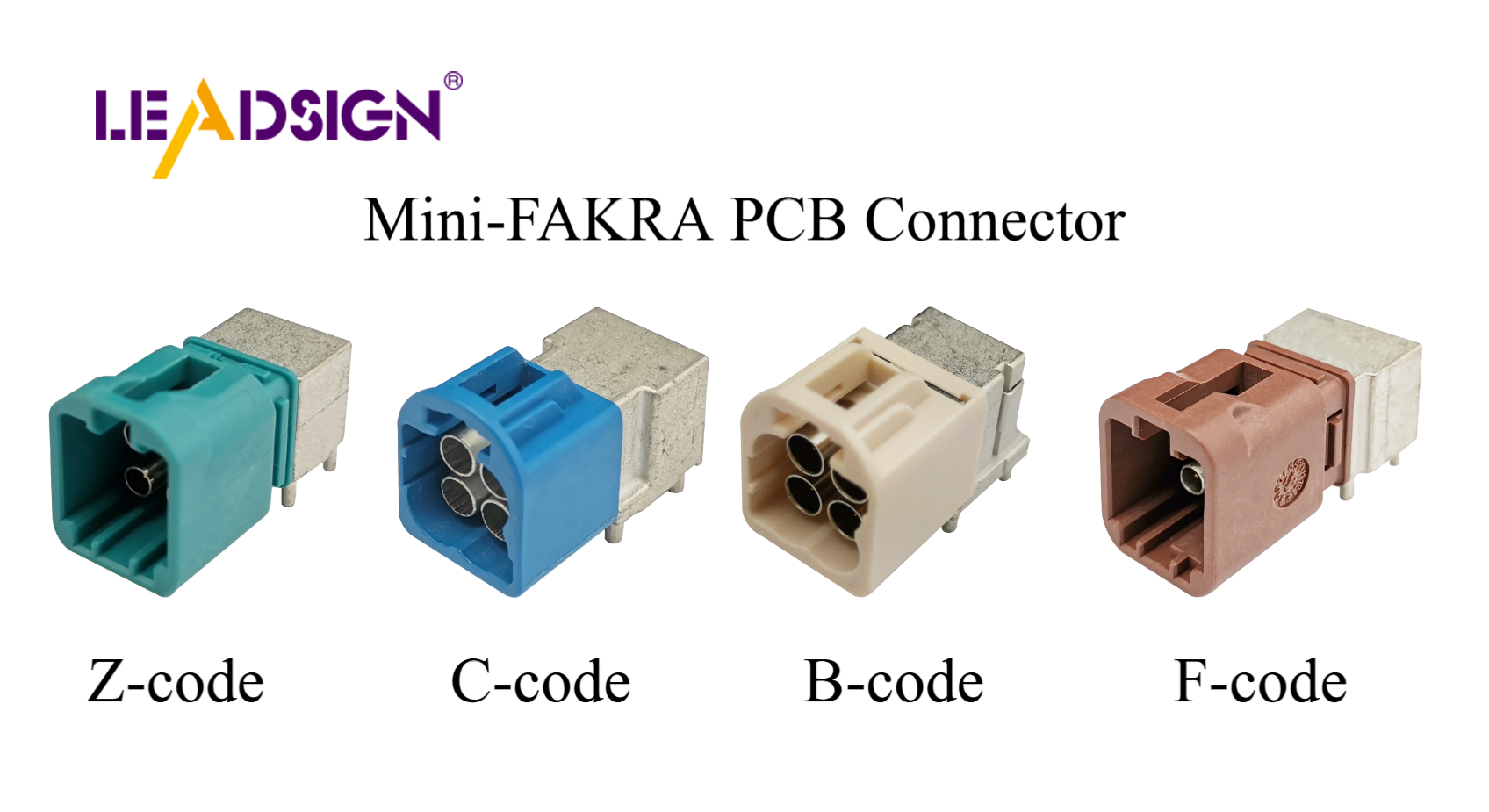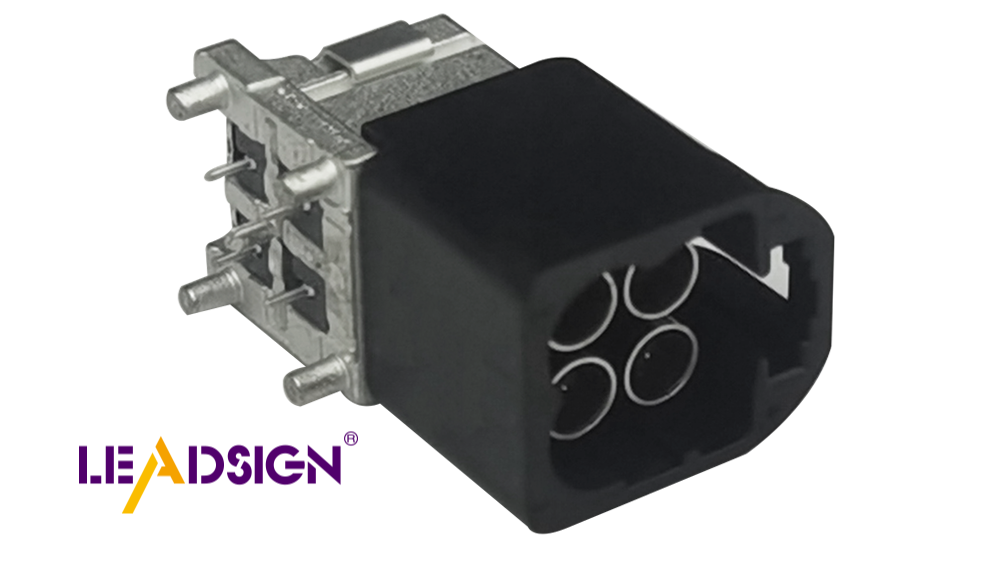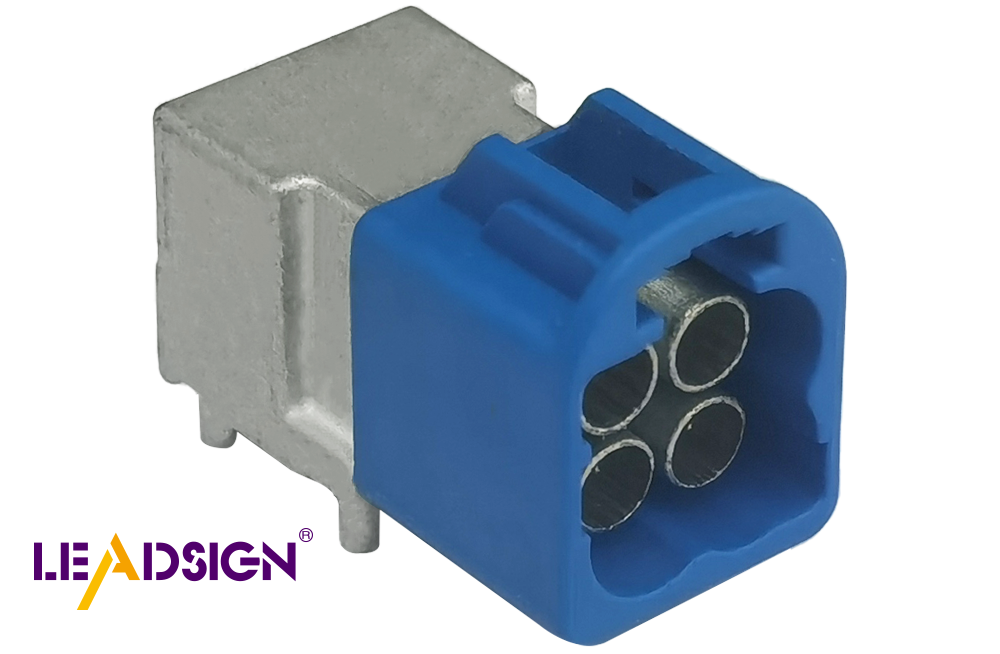Exploring Automotive Electrical Connectors Types for Advanced Driver Assistance Systems

High-Speed Automotive Connectors are crucial for safety and efficiency in vehicles. They facilitate the rapid and reliable transmission of data for systems such as crash prevention and lane-keeping assistance. Compact designs optimize space and contribute to lighter vehicles, which is essential for modern automotive engineering. Innovative solutions like the HSFM series and Rosenberger High-Speed FAKRA-Mini have revolutionized the industry by operating at high speeds and enabling data transmission rates of up to 28 Gbps. These advancements ensure that connections perform optimally, enhancing the functionality of contemporary automotive systems.
Key Takeaways
High-speed automotive connectors are essential for the effective functioning of Advanced Driver Assistance Systems (ADAS), enabling rapid data transfer for safety features like crash prevention and lane-keeping.
Connectors like the HSFM Series and Rosenberger High-Speed FAKRA-Mini support data rates up to 28 Gbps, ensuring smooth communication between sensors, cameras, and control systems.
The compact design of modern connectors saves space and reduces vehicle weight, contributing to better fuel efficiency and a smaller environmental footprint.
Reliable performance in harsh conditions is crucial; high-speed connectors are designed to withstand extreme temperatures and vibrations, ensuring safety systems operate without delays.
Future trends in automotive connectors include faster data speeds, smaller sizes, and the use of eco-friendly materials, aligning with the industry's push towards smarter and greener vehicles.
Investing in high-speed connectors not only enhances vehicle performance but also supports the growing demand for advanced technologies in self-driving and electric vehicles.
The Role of High-Speed Automotive Connectors in ADAS
Why ADAS Needs Fast Data Transfer
Advanced Driver Assistance Systems (ADAS) need quick data sharing to work well. Fast data transfer helps sensors, cameras, radar, and controls communicate instantly. These parts team up to provide features like lane-keeping, crash prevention, and cruise control. Without fast data, these systems can't make quick decisions.
High-speed connectors are key to keeping data signals strong. Unlike older connectors, they handle the faster speeds ADAS needs. This ensures smooth data flow without delays, even in tough conditions. For example, autopilot systems need to process data from many sources at once. High-speed connectors make this possible by supporting very fast data rates.
Uses of High-Speed Automotive Connectors in ADAS
High-speed connectors are vital for many ADAS tasks. They help navigation systems guide drivers through traffic accurately. These connectors also improve entertainment systems, making trips more enjoyable. Plus, they help vehicles check and report problems quickly.
Autonomous driving depends on these connectors to link LiDAR, radar, and sensors. This ensures accurate mapping of surroundings. High-speed connectors also reduce delays, which is critical for safety. For instance, if a car spots an obstacle, the connectors send the braking signal instantly.
Today, high-speed connectors are a big part of car innovation. They boost performance while saving space and cutting costs. With these connectors, cars can be lighter, smarter, and more dependable.
Types of High-Speed Automotive Connectors

HSFM Series (High-Speed FAKRA Mini Coaxial)
The HSFM Series is a modern solution for today's cars. These connectors can handle data speeds up to 20 GHz. They are great for advanced tools like radar, LiDAR, and sensors. Their small size saves space but still works very well. For example, the 4-port HSFM reduces the PCB size by nearly half. This helps make better use of tight spaces in vehicles.
These connectors work with both wire-to-PCB and wire-to-wire setups. They send data quickly and reliably, even in tough conditions. Adding the HSFM Series to your car's system improves communication. This makes Advanced Driver Assistance Systems (ADAS) work better overall.
Rosenberger High-Speed FAKRA-Mini
The Rosenberger High-Speed FAKRA-Mini connectors are strong and affordable. They work with shielded and unshielded twisted pair cables. This makes them useful for many car systems. They use one data pair and work with unscreened automotive Ethernet. They also fit older RosenbergerHSD systems.
These connectors are great for fast data needs like navigation and infotainment. They also help with self-driving car technologies. Their design fits easily into current systems. You can upgrade your car without big changes. Using Rosenberger High-Speed FAKRA-Mini connectors improves performance while saving money.
Mini Koax and Automotive Ethernet Connectors
Mini Koax and Automotive Ethernet Connectors are key in modern cars. Mini Koax connectors are tiny but handle high frequencies well. They are perfect for tight spaces and connect sensors, cameras, and more. They ensure fast and steady data sharing.
Automotive Ethernet connectors manage the growing data needs in cars. They allow quick communication between systems like ADAS and diagnostics. Adding these connectors ensures smooth data flow and better system performance.
Both Mini Koax and Automotive Ethernet connectors improve car technology. They help cars connect better, stay safer, and work more efficiently.
Key Features and Benefits of High-Speed Automotive Connectors
Fast Data Transfer
High-speed connectors help cars share data quickly and easily. They support speeds up to 28 Gbps for smooth communication. Systems like sensors, cameras, and radar work together better. This speed helps ADAS make quick and smart driving decisions.
Fast data also improves navigation and entertainment systems. For example, you can get traffic updates or stream videos without delays. These connectors make all car systems work faster and more reliably.
Saves Space and Weight
Modern cars need small and light parts to work well. High-speed connectors are tiny and save a lot of space. The HSFM series, for example, uses 80% less room in cars.
Smaller connectors also make cars lighter. Lighter cars use less fuel and are better for the environment. These connectors help cars be both advanced and eco-friendly.
Better Safety and Dependability
Safety is very important in cars, and these connectors help. They stay strong even in heat, cold, or when the car shakes. This keeps safety systems like crash prevention working all the time.
The strong design stops signal problems or delays. This is very important for self-driving cars. Even a small delay can cause big problems. With these connectors, car systems stay safe and dependable.
Challenges and Future Trends in High-Speed Automotive Connector Technology

Design and Manufacturing Challenges
Making high-speed car connectors comes with many problems. One big issue is handling the growing data needs of modern cars. Systems like cameras, radar, and lidar need connectors that send data very fast. These connectors must work without losing signals, which is hard to achieve.
Another problem is making connectors tough enough for harsh conditions. Cars face extreme heat, cold, shaking, and even dust or water. These can damage connectors. To fix this, companies use strong materials and smart designs. For example, TE Connectivity works hard to make connectors that stay reliable in tough environments.
Making connectors smaller is also a challenge. Cars now have more technology, so space is limited. Engineers must create tiny connectors that still work well. This needs advanced tools and new ideas to balance size and performance.
Trends Driving Innovation
New trends are changing how connectors are made. Self-driving cars and electric vehicles need connectors for systems like ADAS and lidar. These systems need fast and steady data sharing, pushing companies to improve connectors.
Eco-friendly materials are also becoming important. Car makers want to use green materials and save energy during production. This helps reduce pollution and supports cleaner technology.
Connectors now need to work with new car technologies. Modern cars use both software and hardware that must connect smoothly. This has led to modular connectors that fit many uses, like safety and entertainment systems.
The Future of High-Speed Automotive Connectors
The future of these connectors looks exciting. They will send data even faster, helping car systems work better. Soon, connectors supporting speeds over 28 Gbps may become normal.
Smaller connectors will also be a focus. Tiny connectors will save space, letting cars add more features without losing style or function.
Green technology will matter more too. Companies will use recyclable materials and energy-saving methods. This helps the planet and meets customer demand for eco-friendly products.
Smart connectors will also appear. These will not only send data but also check and improve their own performance. This will make them more reliable and efficient.
Cars are becoming smarter and safer. High-speed connectors will lead the way, making vehicles better for everyone.
Fast car connectors are changing how cars work and drive. They help advanced systems share data quickly, making driving safer and smarter. These connectors let sensors and cameras talk to each other better. Their small size saves space, so cars can have more features. As self-driving cars improve, we will need even better connectors. New designs will make future cars safer, more connected, and greener.
FAQ
What are the benefits of using ADAS with good automotive connectors?
Adding ADAS and strong connectors to cars has many perks:
Better Safety: ADAS helps avoid crashes and stay in lanes. Good connectors keep these systems working well.
More Comfort: Automatic features make long drives less tiring for drivers.
Efficiency: Top connectors help ADAS work better, saving fuel and cutting pollution.
How do older car connectors handle modern vehicle needs?
Older car connectors are still important for today’s complex cars. They:
Send Data Fast: They handle inputs from cameras, radar, and LiDAR for ADAS.
Link Systems: They connect car parts smoothly for the best performance.
Why are high-speed connectors important in today’s cars?
High-speed connectors are key for advanced car systems. They:
Allow quick and steady data sharing, needed for ADAS and self-driving.
Fit trends like small size, toughness, and new tech compatibility.
Use eco-friendly designs to help the environment.
How do new connectors make ADAS better?
Modern connectors improve ADAS by:
Stopping Signal Problems: They block interference for clear data flow.
Handling Data Faster: They process data quickly for real-time decisions.
Why do smart connectors matter for self-driving cars and ADAS?
Smart connectors are crucial for self-driving cars and ADAS because they:
Ensure good communication between sensors, cameras, and controls.
Help cars run safely and efficiently with instant data sharing.
Boost reliability with self-checking features.
What is growing the automotive connectors market in Europe?
The European market for car connectors is growing due to:
R&D Investments: Companies create better connectors for ADAS and electric cars.
New Tech: Improved designs meet modern car needs for top performance.
Where are high-speed car connectors used outside of vehicles?
High-speed car connectors help in other fields like:
Healthcare: Connecting medical devices better.
Electronics: Speeding up data in gadgets.
Factories: Making machines work faster.
Aerospace: Keeping systems reliable in planes and energy setups.
How do EV connectors handle tough systems?
Electric cars need advanced connectors for:
High Power: Safely moving electricity in high-voltage systems.
ADAS: Managing big data for quick decisions.
Battery and Lights: Linking complex parts smoothly.
What trends will shape future car connectors?
Future car connectors will focus on:
Faster Speeds: Over 28 Gbps for advanced systems.
Smaller Sizes: Tiny connectors save space for more car features.
Green Designs: Using recyclable materials and saving energy.
Smart Features: Self-checking connectors for better reliability.
How do high-speed connectors keep cars safe and reliable?
High-speed connectors improve safety by:
Keeping Signals Strong: No delays in systems like crash prevention.
Handling Tough Conditions: Working well in heat, cold, and vibrations.
Staying Dependable: Supporting ADAS and self-driving systems consistently.
See Also
Understanding HSD Connectors Within Automotive Applications
Enhancing Data Transfer in Vehicles With Advanced Connectors
Uncovering Advantages of Fakra Connectors in Vehicles
Significance of Fakra Connectors in Today's Automobiles
Benefits of HSD Connectors for Vehicle Infotainment Solutions

